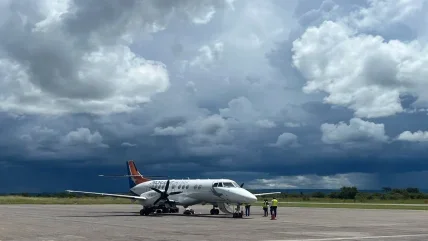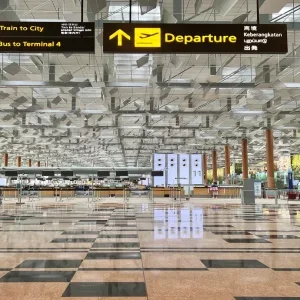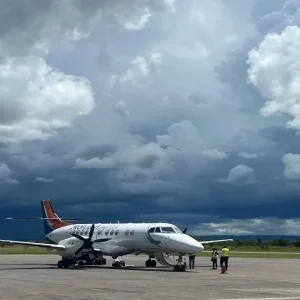
In recent years, the airport sector has been increasingly impacted by extreme weather events. These events, ranging from hurricanes and typhoons to severe snowstorms and heatwaves, pose significant challenges to airport operations, infrastructure, and safety. As climate change continues to intensify these weather phenomena, airports around the world must adopt innovative strategies and technologies to mitigate risks and enhance resilience.
The Growing Threat of Extreme Weather
Increasing Frequency and Intensity
Scientific research indicates that extreme weather events are becoming more frequent and severe. According to the Intergovernmental Panel on Climate Change (IPCC), the intensity and frequency of extreme weather events such as heavy rainfall, heatwaves, and hurricanes have increased due to global warming. This trend poses a substantial threat to airport operations, as these facilities are often located in areas vulnerable to climatic changes, including coastal regions and low-lying areas.
Case Studies of Disruption
Several recent instances illustrate the severe impact of extreme weather on airport operations. In 2017, Hurricane Harvey caused unprecedented flooding in Houston, Texas, leading to the closure of George Bush Intercontinental Airport for several days. Similarly, Typhoon Jebi in 2018 resulted in extensive damage to Kansai International Airport in Japan, stranding thousands of passengers and disrupting flights for weeks.
Impacts on Airport Operations
Flight Delays and Cancellations
Extreme weather events can lead to significant flight delays and cancellations. For example, severe snowstorms in the northeastern United States often result in the grounding of flights, leading to cascading delays across the national and international air travel network. The economic impact of such disruptions is substantial, affecting airlines, passengers, and airport revenues.
Infrastructure Damage
Airports are vulnerable to damage from extreme weather events. Hurricanes and typhoons can cause structural damage to terminals, runways, and support facilities. Flooding can lead to waterlogged runways and taxiways, while high winds can damage hangars and other critical infrastructure. Repairing and rebuilding these facilities can be costly and time-consuming, further exacerbating operational disruptions.
Safety Concerns
Safety is a paramount concern during extreme weather events. High winds, heavy precipitation, and reduced visibility can pose serious risks to aircraft during takeoff and landing. Ensuring the safety of passengers, crew, and ground staff requires meticulous planning and coordination. Airports must implement robust safety protocols and invest in advanced weather monitoring and forecasting systems to anticipate and respond to extreme weather conditions.
Enhancing Airport Resilience
Infrastructure Adaptation
To mitigate the impact of extreme weather events, airports are investing in resilient infrastructure. This includes elevating runways and critical facilities to prevent flooding, reinforcing buildings to withstand high winds, and improving drainage systems to handle heavy rainfall. For instance, San Francisco International Airport has embarked on a multi-billion-dollar plan to raise its sea wall by several feet to protect against rising sea levels and storm surges.
Advanced Weather Forecasting
Accurate weather forecasting is essential for managing the risks associated with extreme weather events. Airports are increasingly utilising advanced meteorological technology, including satellite-based systems and predictive analytics, to monitor weather patterns and anticipate potential disruptions. Real-time data enables airport operators to make informed decisions about flight schedules, ground operations, and emergency response measures.
Emergency Preparedness and Response
Effective emergency preparedness and response plans are crucial for minimising the impact of extreme weather events on airport operations. Airports must conduct regular drills and simulations to ensure that staff are well-prepared to handle emergencies. Coordination with airlines, local authorities, and emergency services is essential for a swift and efficient response. For example, Miami International Airport has developed comprehensive hurricane preparedness plans, including pre-storm evacuation procedures and post-storm recovery protocols.
Technological Innovations
Autonomous Systems
The deployment of autonomous systems is transforming how airports manage extreme weather events. Unmanned aerial vehicles (UAVs) and autonomous ground vehicles can be used for damage assessment and recovery operations, reducing the risk to human personnel. These systems can quickly survey affected areas, identify hazards, and support efficient recovery efforts.
IoT and Smart Infrastructure
The Internet of Things (IoT) and smart infrastructure are playing an increasingly important role in enhancing airport resilience. IoT sensors can monitor environmental conditions in real-time, providing critical data on temperature, humidity, wind speed, and precipitation. This information can be integrated into smart systems that automatically adjust airport operations, such as activating flood barriers or adjusting heating and cooling systems to maintain optimal conditions.
Collaborative Efforts
Industry Partnerships
Collaboration within the aviation industry is essential for addressing the challenges posed by extreme weather events. Airports, airlines, regulatory bodies, and meteorological agencies must work together to develop best practices, share information, and coordinate responses. Industry organisations such as the International Air Transport Association (IATA) and Airports Council International (ACI) play a pivotal role in facilitating these collaborative efforts.
Government and Regulatory Support
Government and regulatory support are critical for enhancing airport resilience to extreme weather events. Policies and regulations that promote sustainable practices, such as the incorporation of climate resilience into infrastructure planning and development, are essential. Governments can also provide funding and incentives for airports to invest in resilient infrastructure and advanced technologies.
Economic and Operational Implications
Cost of Disruptions
The economic impact of extreme weather events on the airport sector is significant. Flight cancellations, delays, and infrastructure damage can result in substantial financial losses for airports and airlines. According to a report by the National Center for Atmospheric Research (NCAR), weather-related delays cost the U.S. aviation industry approximately $28 billion annually. The global impact is likely even higher, underscoring the need for proactive measures to mitigate these costs.
Insurance and Risk Management
Insurance plays a crucial role in managing the financial risks associated with extreme weather events. Airports must ensure they have adequate insurance coverage to protect against potential losses. Additionally, comprehensive risk management strategies that include regular risk assessments, contingency planning, and investment in resilient infrastructure are essential for minimising financial exposure.
Future Outlook
Climate Change and Long-Term Planning
As climate change continues to influence weather patterns, the airport sector must engage in long-term planning to enhance resilience. This involves not only addressing immediate threats but also anticipating future challenges. Airports must integrate climate change projections into their planning and development processes, ensuring that new infrastructure is designed to withstand future conditions.
Innovation and Adaptation
Innovation and adaptation are key to the airport sector’s ability to cope with extreme weather events. Embracing new technologies, investing in resilient infrastructure, and fostering collaborative efforts will enable airports to navigate the challenges posed by a changing climate. As the sector evolves, a proactive and forward-thinking approach will be essential for ensuring the safety, efficiency, and sustainability of airport operations.
Conclusion
Extreme weather events present significant challenges to the airport sector, impacting operations, infrastructure, and safety. As these events become more frequent and severe due to climate change, airports must adopt comprehensive strategies to enhance resilience. This includes investing in resilient infrastructure, utilising advanced weather forecasting and monitoring technologies, and developing robust emergency preparedness plans. Collaborative efforts within the industry and support from governments and regulatory bodies are also crucial for addressing these challenges. By embracing innovation and long-term planning, the airport sector can mitigate the risks associated with extreme weather events and ensure the continued safety and efficiency of global air travel.






